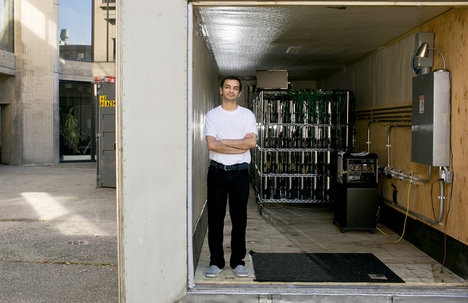(p. A18) One cannot live any closer to the terminals of La Guardia Airport than the residents of East Elmhurst, Queens. Some homes sit only a few hundred yards away from the control tower, on the opposite side of the Grand Central Parkway. The new $4 billion airport hub envisioned for the site, announced this week by Gov. Andrew M. Cuomo and Vice President Joseph R. Biden, would be even closer.
So it might be assumed that the promise of years of heavy-duty construction and the associated noise, traffic and dust would fill residents with dread.
Not quite.
“We live in New York City, honey,” said Michele Mongeluzo, 56, whose house sits on a rise just south of the parkway, offering an unobstructed view of the airport and the proposed construction site. “If you want country living, move to the country.”
In interviews this week along the blocks closest to the airport, residents almost universally said that they not only had no trepidation about the construction but that they also actually welcomed it. Improvements, they said, were long overdue.
Furthermore, they suggested, what was a little construction on top of the aural challenges — the roaring jet engines, the chop of helicopter rotors, the incessant highway traffic — that they had already contended with and apparently overcome?
“If it’s noisy, I’m used to it,” said Freddy Fuhrtz, 75, who retired as an employee in the cargo division of Pan Am and still lives in the two-story house on 92nd Street where he grew up and raised his children. “It’s progress.”
For the full story, see:
KIRK SEMPLE. “Construction Plans Don’t Faze Airport Neighbors.” The New York Times (Fri., JULY 31, 2015): A18 & A21.
(Note: the online version of the story has the date JULY 30, 2015, and has the title “Construction Plans for La Guardia Airport Don’t Faze Its Neighbors.”)


